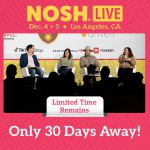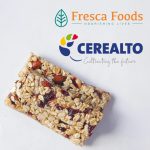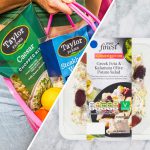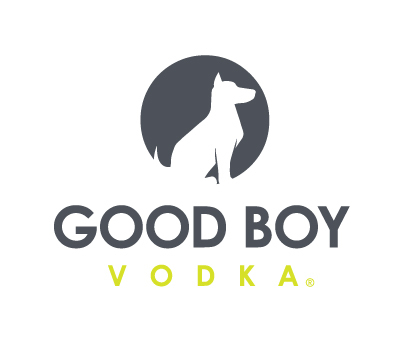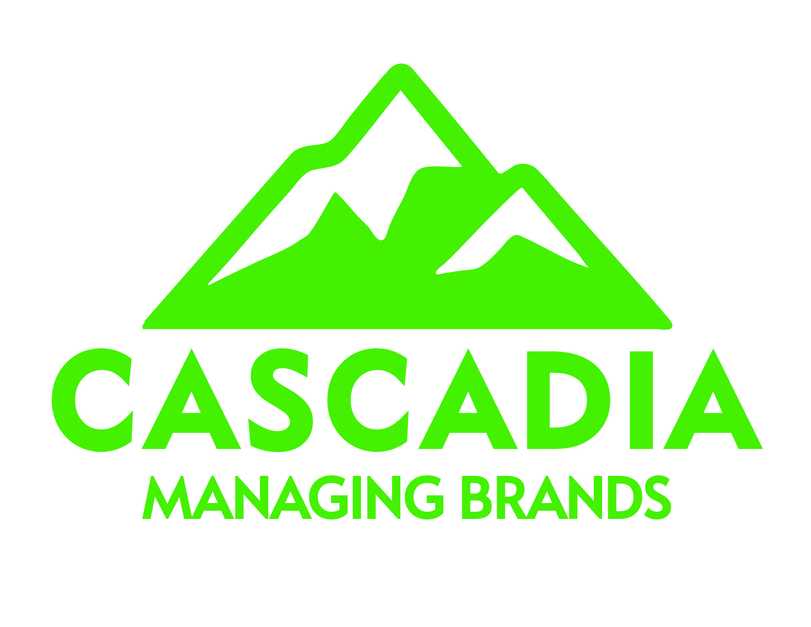A Bite With…Nooish Founder Sarah Nathan

Knowing how all-encompassing it is to launch and operate a CPG brand, it’s not surprising that many industry consultants and advisors are hesitant to become founders themselves.
For Sarah Nathan, the calling to create something of her own was just too great to ignore.
Nathan’s background in CPG spans over eight years starting as a marketing VP at upcycled food company ReGrained to managing the Chobani Incubator program and advising various brands in her own consulting business. Now, Nathan is on the precipice of launching matzah ball soup brand Nooish next month, which pairs the convenience of instant ramen with Jewish soul food.
In an effort to peek behind the curtain of innovation and the long road of bootstrapping a new product launch, Nathan talked with Nosh about how she went from mentoring to mixing matzah meal and why providing oneself grace in the R&D process can make a big difference.
How did your past experience in CPG lead you to launch Nooish?
I always said seeing all of these people launch brands that I would never do it because it’s so hard. I couldn’t imagine doing it.
For the past four years I have been a consultant for mostly women- and minority-owned brands. I really wanted to be that sherpa for these founders, especially solo founders, where they didn’t have the experience of the [CPG] industry. I was able to help them break down all these elements whether it was go-to-market strategy, brand positioning, working with retailers and distributors and finding the right partners. As I was doing it, I started to think: I could do this.
Then I became a fractional general manager for Goodonya, out of San Diego, and that is what basically got any impostor syndrome out. I realized I could be a good operator. I theoretically had all of these skills. I had been working on them through my time in the industry, but I had never really been able to put them into practice until then.
Before Nooish was a fully developed and formulated idea, what helped guide you to instant matzah ball soup?
I had seen all these new American staple brands like Fly By Jing, Omsom, A Dozen Cousins, Maya Kaimal, and they were elevating their own culture and traditional food. Why is nobody doing that for Jewish food?
I really wanted to express my people’s culture in a way that says “16 million Jews, 16 million ways to be Jewish.” We’re a very diverse people. I’m not going to solve anti-semitism with my brand, but, just like Omsom, it has a brand that feels really exciting and really inclusive. Yet, when you go on their social media, they’re loud, proud and not submissive. It says, “Let’s break down stereotypes and myths and history.” I think that it’s really made a difference in not only their community but outside their community in the way that Asian culture is understood.
So I had this checklist. Having the experience that I had as a frozen buyer, I knew I was not going to be in frozen or perishable. It had to be something Americana, that people knew, that wasn’t just a holiday item. It has to be lightweight, shelf-stable, had a gap in the market and was omnichannel.
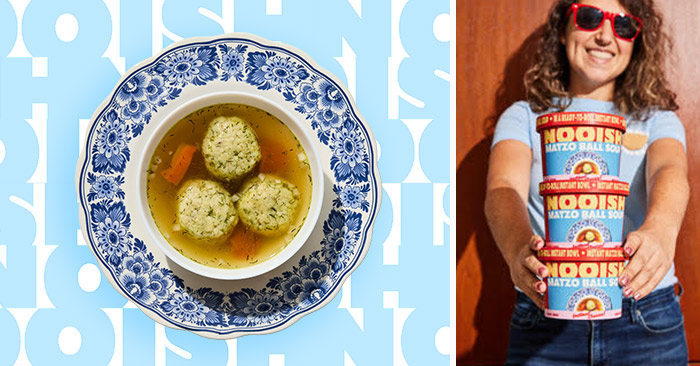
What lessons have you gained from other food brand launches that shaped your approach to Nooish?
On a macro level, patience was my biggest take away. I saw so many food brands that would get frustrated with how long things can take in this industry or be disappointed when countless potential launch dates passed them by due to delays outside of their control. I gave myself a lot of leeway and a lot of grace, not rushing into any decision. I made sure I didn’t let perfect get in the way of good and that I was really pleased with the product I put out into the world. I tend to make mistakes when I rush, so I have been happy to have had the luxury to give myself the grace mentally to slow down when necessary.
On a micro level, I noticed that every time a brand would launch they would have very minimalistic or artsy packaging and then would always rebrand with photography or an illustration of the product on the packaging. I wanted to make sure the matzo balls were visible and mouth-watering front and center from day one.
What was the biggest challenge you weren’t expecting that you had to deal with in launching a CPG food product? How did you solve it?
Inventing a new product sometimes means there are no natural co-manufacturers to partner with. It was important for me to get the product out into the world and build proof of concept, but that meant self-manufacturing. Working in the kitchen 12 to 14 hours on some days and then trying to come home and build my website or follow up with a sales lead was exhausting and unsustainable. I have worked with many founders who have trouble knowing when to get out of the kitchen because they say they do not have the capital to pay for labor, but ultimately a founder’s time is most valuable focusing on sales and marketing.
I invested in hiring a kitchen manager who was able to cut my production time by over 75%, and I found a local 3PL that solves my warehousing and logistics issues. It is easy to think you can do it all on your own, but once you get in there, it is really important to understand what should be prioritized. It is very satisfying to have my hands on the product and feel like I accomplished something tangible, but it is not what will ultimately move this business forward.
What was the original launch strategy for Nooish, and has it changed as you have gotten closer to unveiling the product to consumers?
The go-to-market strategy has not changed a ton. I always envisioned direct-to-consumer to be the right entry point, but I have taken a ton of customer feedback and done research on the space that brought me from a 6-pack down to a 4-pack. Getting under a $50 price point is really key I believe to relieving purchase tension. I also reformulated from two balls in a cup to three. It wasn’t the most margin-friendly decision, but I believe it will be the main factor when it comes to repurchasing and leaving a customer feeling truly satisfied and satiated.
The people asked for more balls, and so they shall have more balls.

